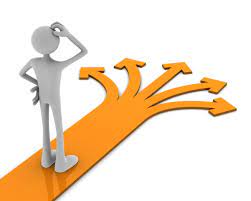Helping Your Employees Make Wise Choices

Creating a culture that empowers employees to make good decisions will help their professional development, increase employee engagement, and enable your organization to reach its objectives more efficiently.
Helping your employees to make wiser choices requires providing them the tools they need to make high-quality decisions and the right level of guidance and coaching. Unfortunately, it can seem time-consuming and much easier to either do it yourself or tell your team what actions they should take. However, since the research shows that companies that empower their employees with coaching and tools have teams that are nearly four times more likely to make a good decision and outperform industry peers financially, it is well worth the effort involved.
Employee decision-making is enhanced when there is a clear understanding of the company's vision, values, and priorities. Ensure that each of your employees knows how their role and responsibilities contribute to the company's overall success.
Embrace reasonable mistakes as learning opportunities. All too often, employees are willing to make no decision rather than make the wrong one. Unfortunately, that leads to employees lining up outside your door waiting to be "told" what choice is the best one.
Encourage your employees to make decisions on their own. However, be available if they feel they are drifting off course. Supporting your employees to learn how to make the best possible choices means listening to empower rather than jumping in with advice.
Coaching your employees to make good choices requires balancing how much input you give and guiding your employee to make the best decision. Using the following four steps lets you walk an employee through the decision-making process. Your use of reflective listening and open-ended questions will allow your employee to explore the problem with you.
- What are the issues? During this step, encourage your employee to identify all of the issues that are impacting the current situation. If things are unclear, ask clarifying questions. Before moving to the second step, take a moment to summarize what you have heard.
- What is the desired outcome? Starting with the end in mind helps to bring clarity to the decision-making process. It also helps your employee to focus on what might work to get results.
- What are the options? Coach your employee to identify all of the possible options. Then, keep asking "what else" until the list is complete.
- Match the option to the desired outcome and make a choice. In this final step, your role is to empower the employee to compare all of the options and choose which one will get results. It is helpful to list the pros and cons. For each option, consider how it will help achieve the desired outcome and the potential pitfalls.
There is a time investment required to effectively coach and empower your team. In the long run, however, it is well worth the effort. Your team will be better equipped to repeatedly make the best decisions possible.
Ready to help your employees make wiser choices? Reach out for a free 20-minute session to discuss what tools can help you empower your team.

